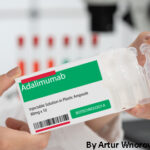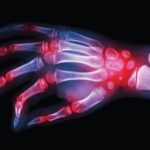Background & Objectives
Difficult-to-treat rheumatoid arthritis (RA) is defined as the failure of two or more classes of biologic or targeted synthetic disease-modifying anti-rheumatic drugs (DMARDs) to control active or progressive disease in patients with RA. Between 5 and 20% of patients with RA have difficult-to-treat RA. The incidence of poly-refractory RA has not been previously established, however.
David et al. investigated the prevalence of poly-refractory RA. RA is considered poly-refractory if a patient has experienced inefficacy or toxicity with at least one drug of all classes, sometimes including the failure of two or more DMARDs within the same class to control disease activity. Additionally, the researchers investigated whether patients with persistent, inflammatory, refractory RA and non-inflammatory, refractory RA, determined by objective ultrasound (US) synovitis, have distinct clinical phenotypes in both EULAR-classified difficult-to-treat -RA and poly-refractory RA groups.
Methods
The researchers conducted a cross-sectional study of 1,591 patients with RA who were being treated with biologic DMARDs. This was conducted as an approved retrospective service evaluation of the Leeds Teaching Hospitals Trust’s specialist RA Biologics Clinic. Patients were identified and included if they had tried two or more classes of biologic and targeted synthetic DMARDs, had a Disease Activity Score of 3.2 or greater in their most recent consultation or extra-articular manifestations of active RA (e.g., glomerulonephritis, pericarditis, scleritis, vasculitis). Data were collected by reviewing electronic medical records from the most recent clinical visit.
Results
Within the group of 247 patients with difficult-to-treat RA, 40 (16%) were classified as having poly-refractory RA, representing 2.7% of all patients treated with DMARDs. The baseline characteristics of patients with poly-refractory RA were generally similar to the non-poly-refractory group. However, more patients in the poly-refractory group had a current or past history of smoking. In addition, patients with poly-refractory RA had a slightly longer disease duration.
Conclusion
David et al. found that only 2.7% of patients with RA treated with biologic or targeted synthetic DMARDs had poly-refractory disease. Among patients with difficult-to-treat RA, under 60% had objective signs of inflammation, representing a target for innovative strategies.
Further, patients with difficult-to-treat RA and poly-refractory RA could be split into two distinct subgroups, those with inflammatory, refractory RA and those with non-inflammatory, refractory RA. The sonographically defined non-inflammatory, refractory RA phenotype was identified within all difficult-to-treat RA groups and appears clinically relevant because it was strongly linked to both obesity and clinically diagnosed fibromyalgia. The presence of objective signs of synovitis in the ultrasound would imply the DMARD is not adequately suppressing inflammation, indicating a need to switch the to a different drug.


